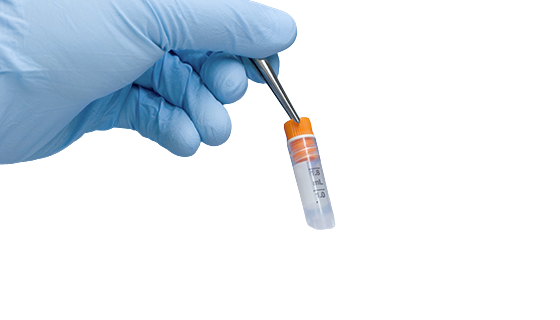Embryo freezing
Safeguarding Fertility Options for Tomorrow
Embryo freezing, also known as embryo cryopreservation, is a revolutionary technique that has transformed the landscape of fertility treatment. This process involves preserving embryos at sub-zero temperatures, allowing individuals and couples to store their embryos for future use

BENEFITS AND PROMISES OF EMBRYO FREEZING
Enhanced Pregnancy Success Rates: A Promising Outlook
Embryo freezing has revolutionized fertility treatment by significantly improving pregnancy success rates. By freezing and storing excess embryos, individuals and couples have the opportunity to undergo multiple embryo transfer cycles, increasing the chances of achieving a successful pregnancy over time.
Flexibility and Future Planning: Empowering Family-Building Choices
Embryo freezing offers individuals and couples the freedom to make informed decisions about their family-building journey. It provides flexibility in timing and allows for family planning according to personal, professional, or medical considerations. By preserving embryos, individuals can pursue parenthood when the time is right for them.
Mitigating Risks and Uncertainties: Overcoming Fertility Challenges
Embryo freezing acts as a safeguard against potential challenges and uncertainties that may arise during the fertility journey. It offers reassurance to individuals facing medical conditions, age-related fertility decline, or other factors that may impact their future fertility. By freezing embryos, they can preserve their fertility potential and increase their chances of successful pregnancy later on.
WHEN IS EMBRYO FREEZING RECOMMENDED?
Embryo freezing is recommended in various scenarios, including in-vitro fertilization (IVF) cycles where more embryos are produced than can be transferred at once. It provides an opportunity for individuals or couples to preserve their surplus embryos for future attempts at pregnancy, offering a sense of security and the potential to build their family over time.
EMBRYO THAWING AND TRANSFER

Thawing Process: Preparing Embryos for Transfer
When the time comes to use the frozen embryos, the thawing process takes place. The embryos are carefully warmed to body temperature, allowing them to regain their normal cellular functions and viability. This delicate process is performed by skilled embryologists in the fertility clinic.

Embryo Transfer: A Step Closer to Parenthood
Following the thawing process, the viable embryos are transferred into the uterus in a procedure known as embryo transfer. This procedure is similar to the one performed during a fresh IVF cycle. The selected embryos are transferred using a thin catheter, guided by ultrasound imaging, to ensure precise placement within the uterine cavity.

Success Rates and Pregnancy Achievements
Embryo transfer using thawed embryos has shown promising success rates comparable to fresh embryo transfers. However, the success rates may vary depending on factors such as the age of the woman, the quality of the embryos, and any underlying fertility concerns. The fertility specialist will discuss the anticipated success rates and the chances of achieving a pregnancy using the thawed embryos.

Emotional Considerations and Support
Embryo transfer is a significant step on the journey to parenthood, and it can evoke a range of emotions. The fertility clinic and support staff provide guidance and emotional support throughout the process, addressing any concerns or questions that arise. They understand the emotional impact of this stage and offer resources to help individuals and couples navigate the emotional aspects of embryo transfer.

Frozen Embryo Transfer (FET) Cycles
In some cases, individuals or couples may choose to undergo a hormone replacement cycle to prepare the uterus for embryo transfer. This process involves taking medications to synchronize the woman's menstrual cycle with the timing of the embryo transfer. FET cycles offer greater control and flexibility in planning the embryo transfer, optimizing the chances of successful implantation and pregnancy.
UNDERSTANDING EMBRYO CRYOPRESERVATION

THE PROCEDURE:
TFrom Creation to Preservation Embryo freezing is typically performed after a successful IVF cycle. Once the embryos have developed to a specific stage, they are carefully prepared and placed in specialized cryoprotectant solutions. These solutions protect the embryos from damage during the freezing and thawing process. The embryos are then frozen using a technique called vitrification, which rapidly cools them to ultra-low temperatures, preventing the formation of ice crystals that could harm the embryos.

STORAGE AND PRESERVATION:
Ensuring Long-Term Viability After the embryos are vitrified, they are transferred to cryopreservation storage tanks, where they remain frozen until the intended parent(s) are ready to use them. These tanks are specially designed to maintain a constant low temperature, preserving the embryos' quality and viability for extended periods.
Who is advised to do IVF
GYNESCOPE
Contact Us
Call: +234 816 659 3030
Email: gynescope@yahoo.com
Address: G.U Ake Rd 22/23
Newsletter
© 2023 Gynescope All Rights Reserved

